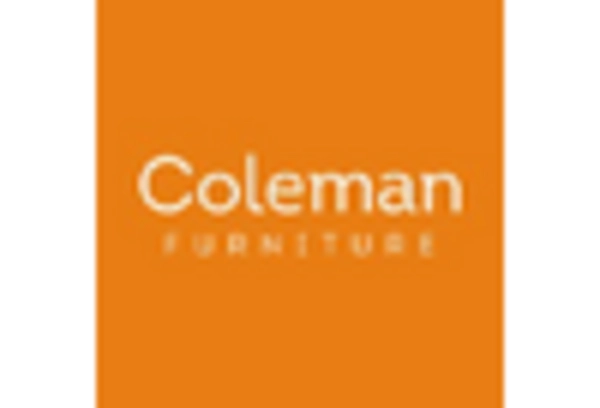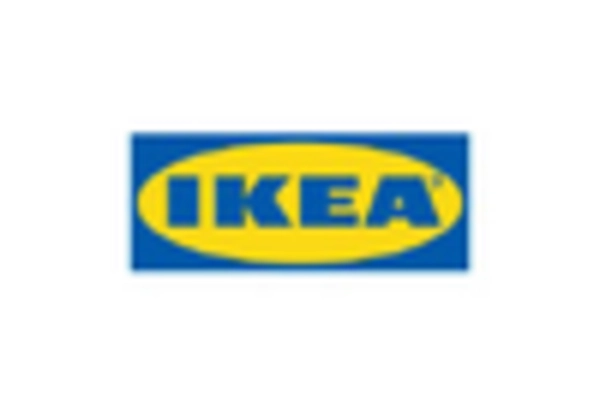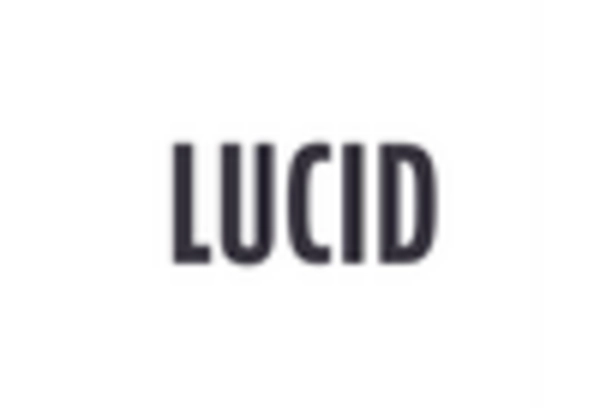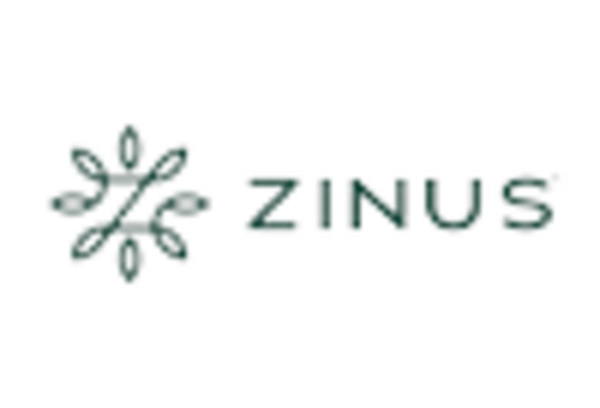The Portable Beds Market is currently characterized by a dynamic competitive landscape, driven by increasing consumer demand for versatile sleeping solutions and the growing trend of outdoor activities. Key players such as IKEA (SE), Coleman (US), and Zinus (US) are strategically positioning themselves through innovation and regional expansion. IKEA (SE) focuses on sustainable product development, enhancing its portfolio with eco-friendly materials, while Coleman (US) emphasizes outdoor functionality, catering to the rising interest in camping and outdoor leisure. Zinus (US) leverages its strong online presence and direct-to-consumer model, which appears to resonate well with the evolving shopping preferences of consumers. Collectively, these strategies contribute to a moderately fragmented market, where differentiation is increasingly based on product innovation and customer experience rather than solely on price.
In terms of business tactics, companies are localizing manufacturing to reduce lead times and optimize supply chains, which is particularly crucial in the context of fluctuating global logistics. The competitive structure of the Portable Beds Market remains moderately fragmented, with several players vying for market share. This fragmentation allows for niche players to thrive, particularly those that can offer specialized products or unique value propositions. The collective influence of these key players shapes market dynamics, as they continuously adapt to consumer preferences and technological advancements.
In August 2025, IKEA (SE) announced the launch of a new line of portable beds made from 100% recycled materials, reflecting its commitment to sustainability. This strategic move not only aligns with global environmental trends but also positions IKEA as a leader in eco-conscious consumerism within the portable beds segment. The introduction of these products is likely to attract environmentally aware consumers, thereby enhancing brand loyalty and market share.
In September 2025, Coleman (US) unveiled an innovative portable bed designed specifically for outdoor use, featuring a built-in solar charging system for electronic devices. This development underscores Coleman's focus on enhancing the outdoor experience, catering to the growing demographic of tech-savvy campers. By integrating technology into its product offerings, Coleman is likely to differentiate itself in a competitive market, appealing to a younger audience seeking convenience and functionality.
In July 2025, Zinus (US) expanded its distribution network by partnering with a major e-commerce platform, significantly increasing its market reach. This strategic alliance not only enhances Zinus's visibility but also streamlines its supply chain, allowing for quicker delivery times. Such partnerships are indicative of a broader trend where companies are leveraging digital platforms to enhance customer engagement and operational efficiency.
As of October 2025, the Portable Beds Market is witnessing a shift towards digitalization, sustainability, and the integration of artificial intelligence in product development and customer service. Strategic alliances are increasingly shaping the competitive landscape, enabling companies to pool resources and innovate more effectively. Looking ahead, competitive differentiation is likely to evolve, with a pronounced shift from price-based competition to a focus on innovation, technology integration, and supply chain reliability. Companies that can effectively navigate these trends will likely emerge as leaders in the Portable Beds Market.


















Leave a Comment